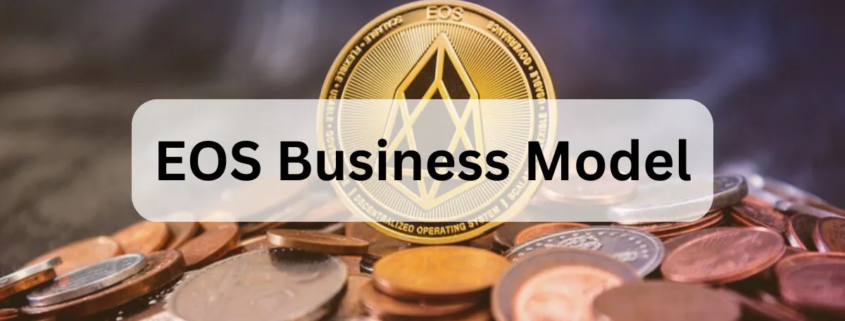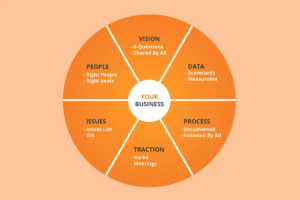The EOS Business Model is a tool that helps business owners to achieve simplification of the business, alignment, and movement in one package. Drawing from Gino Wickman EOS is a set of simple yet actionable tools and concepts designed to operate the business, establish its goals and transform its operations for improved performance.
The Core Components of the EOS Business Model
The EOS Business Model is built on six key components that are essential for any successful business:
- Vision: The Vision component is concerned with ensuring everyone in the organisation is aligned to the direction, position and strategy of the business organisation. These are values of the company, focus, the ten-years vision, marketing objective, three years outlook, one-year goals, specific goals for 90 days and finally issues list.
- People: In the People component, the focus lies on the right people on the right positions. This means reviewing your staff against this criterion, putting people in jobs that best suit them and aligning them to your corporate DNA. In the implementation of the EOS model, tools such as the Accountability Chart to help create role responsibility.
- Data: Data related component is all about managing your business based on actual facts and not on hunches and intuitions. This means the setting of performance indicators, which are tools that assist in assessment of achievement of the laid down goals. These are measured using the Scorecard tool that is used to monitor such parameters on weekly basis to ensure senior management and all other staff are on the line on how they are performing.
- Issues: Every business faces challenges, and the Issues component helps you identify, discuss, and solve these issues at their root cause. The EOS model uses the Issues Solving Track™ (IDS™) process to prioritize and tackle issues systematically, ensuring that problems are addressed efficiently and effectively.
- Process: The Process component is to write down and stick to your main processes to confirm conformity and repeatability. When it is clear which processes are important, have recorded them, and standard operating procedures exist to ensure compliance, you are well on the way to levelling out your processes and building a more consistent operation.
- Traction: The Traction component therefore focuses on you getting moving and doing your vision. This involves creating and achieving small sub targets on the course of the overall major goals set in the future. To maintain focus the EOS model is equipped with Rocks, as well as the Meeting Pulse™.
Conclusion
In conclusion it can be said that the EOS Business Model is a valuable tool for companies, interested in the improvement of business performance and, subsequently, company’s revenue growth. Thus, considering all these six components, it is possible to build the foundation for further success in business. Welcome to Blogchirp – for information, ideas and advice to help your organisation successfully adopt the EOS framework.


